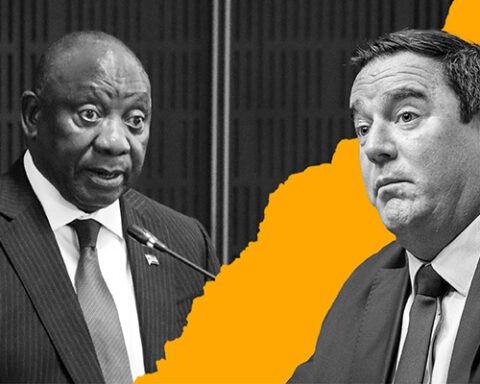Tax-free savings accounts (TFSAs) were introduced in 2015 to encourage South Africans to save more. Some 10 years later, we now have a sufficiently long track record to analyse whether investors and advisers are maximising the material benefits that they offer; the growth and income received on a TFSA are tax-free, which means that you are not liable for any capital gains tax or income tax on the dividends and interest received on your investment.
Maximise your annual TFSA contribution, early in the tax year
Consider that someone who has maximised their annual contribution limit from the outset would have invested R339,000 by the end of February 2025. Interestingly, the largest TFSA account value on the Ninety One Investment Platform (Ninety One IP) was approximately R833,000 by the end of December 2024. That’s tax-free growth of R494,000 – almost two and a half times the total amount invested! And in aggregate, TFSA investors at Ninety One IP now have a total of approximately R5.1bn invested, that being a combination of the smallish annual contributions and tax-free market growth.
Maximising any tax benefit is an important consideration, as is appreciating that the earlier you start earning investment returns, the earlier those investment returns start compounding. Analysis undertaken by Ninety One shows that simply investing in the Ninety One Opportunity Fund via a TFSA at the beginning of each tax year, as opposed to the end of the tax year, would result in as much as an additional 10% payout after 15 years. And, for those who cannot commit to an investment of R36,000 at the beginning of each tax year, it is more financially rewarding to initiate a monthly debit order of R3,000, as this results in an additional 5% compared to investing R36,000 at the end of each tax year.
Unfortunately, an analysis of Ninety One IP TFSA cash flow shows that not only are many investors waiting until the end of the tax year to top up their TFSA, but that many debit order investors have not increased their monthly debit order amount from the previous maximum contribution limits of initially R2,500 per month and then R2,750 per month to the current limit of R3,000 per month.
Disappointingly, only two-thirds of active TFSA investors on the Ninety One IP platform made an investment into their TFSA in the past tax year, and only approximately one-third invested close to the maximum annual allowance. These are all opportunities missed.
Invest for growth, over the long term
A key insight when setting up a TFSA is that the underlying investment portfolio should be consistent with the long-term nature of the investment; based on the current annual limit it will take 14 years to reach the lifetime contribution limit of R500,000. This is a key consideration as the tax benefits of TFSAs compound exponentially over time. Therefore, it makes no sense for an investor to use a TFSA for an investment horizon of less than five years.
While most Ninety One IP TFSA investors appear to agree – 93% are invested in offshore, equity or multi-asset (balanced or flexible) funds – unfortunately 7% are not maximising the return potential of growth assets/investments.
Don’t treat your TFSA as an emergency fund
TFSA benefits only accrue to those investors who remain invested for the full investment period. Remember that a TFSA allowance is a “use it or lose it” allowance – if you withdraw some or all of your TFSA investment, you cannot reinvest the amount withdrawn.
Unfortunately, over the past two years, almost 12% of Ninety One IP TFSA investors made some level of withdrawal from their TFSA:
- 11% withdrew up to R50,000; and
- A further 1% withdrew more than R50,000, i.e. more than a third of all those who made a withdrawal in the past three years withdrew more than R50,000.
If we look at withdrawals as a percentage of opening TFSA assets:
- From January to December 2023, we had withdrawals of 5.2% of opening assets; and
- From January to December 2024, we had withdrawals of 5.3% of opening assets, still a relatively high percentage and perhaps indicative of the tough economic environment.
Finally, about 7.5% of the TFSA accounts on Ninety One IP had a withdrawal rate of more than 25% of account balances, with some investors completely emptying their TFSA accounts. Disappointingly, some investors appear to be using their TFSA as a transactional account, with most of what they contributed being withdrawn in the same year.
Conclusion
In 10 short years, early adopters are already reaping the material benefits offered by TFSAs. However, it is critical that investors stay the course and, whenever possible, invest the maximum allowable amount at the beginning of each tax year into a growth-oriented fund. If this is not possible, it is preferable to initiate a monthly debit order rather than wait until the end of the tax year to contribute. The earlier you start earning investment returns, the earlier those investment returns start compounding, tax-free!
Top image: Unsplash/ Towfiqu Barbhuiya
Sign up to Currency’s weekly newsletters to receive your own bulletin of weekday news and weekend treats. Register here.






